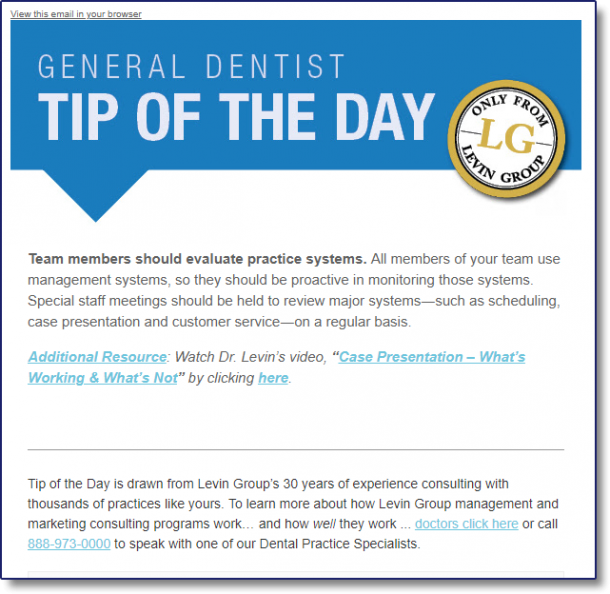Many dentists are, but they don’t know it. Why? Because their practice has a sense of “busy-ness” to it. But here’s the thing… “busy-ness” doesn’t necessarily translate to productivity or profitability.
An outdated scheduling system runs slow. It makes you believe that you’re busier than you are. As your schedule ages, the more bottlenecks it accumulates, slowing things down even more.
Stress increases, while productivity decreases. If nothing is done, employees eventually leave, creating even more stress.
Are you one of those doctors working an extra day a week? Answer these five questions:
1. Is the current scheduling system three years or older?
If yes, that’s a big red flag. You might be saying, “Roger, my schedule is five years old and works perfectly fine. Why should I change it?” Your practice is constantly changing (and so is dentistry), even though it may seem the same as it ever was. In the span of 3–5 years, practices add services, update software, purchase new equipment, switch materials and experience turnover. All these changes impact the schedule and its efficiency.
2. Do you feel like your practice should be more financially successful than it is?
Over the past few years, I’ve met many dentists who ask me, “I’m busting my tail day-in day-out, yet why do I have so little to show for it at the end of the year?” An inefficient schedule is like a mirage… it tricks you into seeing things that aren’t there. It’s disconcerting when you realize all your hard work isn’t paying off like it should.
3. Does your practice consistently run behind two or more days a week?
If so, your old schedule is also killing your customer service and case acceptance. When patients are forced to wait 10–15 minutes or more, they will complain about your practice to their friends, cancel their next appointment, post a bad review on social media and turn down recommended treatment.
4. Has it been longer than a year since you performed procedural time studies?
If it’s been longer than a year, that’s another good indication that your schedule isn’t as accurate as it should be. When the appointment time is out of sync with scheduled procedure, you’re either running behind or have unnecessary gaps in your schedule. Neither situation is a good one.
5. Would you say your stress is higher than it used to be?
Outdated systems are the #1 cause of stress, and an outdated scheduling system is often the main culprit. The schedule affects everything you do. If it runs sluggishly, then you have unhappy patients in the reception area… frantic clinical staff trying to play catch-up… and an overwhelmed front desk team dealing with the fallout.
Conclusion
Who wants to work harder for less? That’s what old systems will do to you and your practice, especially an outdated schedule. If you answered “yes” to at least two of the above questions, it’s time for a new schedule. The sooner you replace it, the sooner you can reap the rewards!
Additional Resource
Need help with your schedule? Check out our new training module called “Scheduling for Maximum Production and Minimum Stress” by clicking here.
[thb_button link=”https://levingroup.com/practicesuccess/” class=”pull-right” style=”” rounded=”” color=”black” icon=”” size=”medium” animation=”right” ]Back to Practice Success Archive »[/thb_button]
